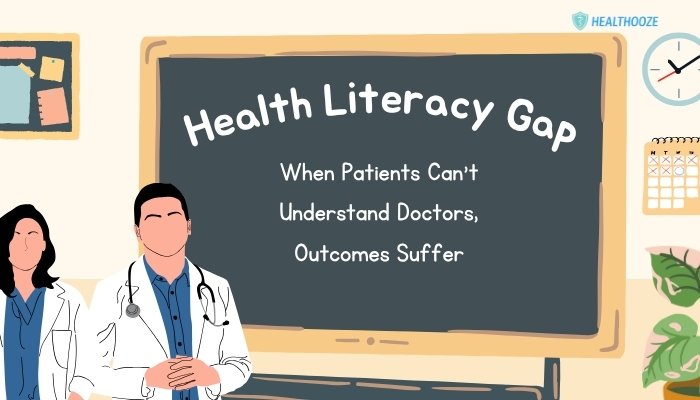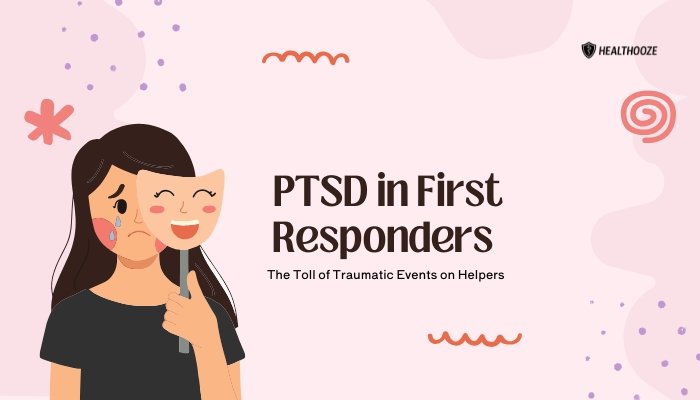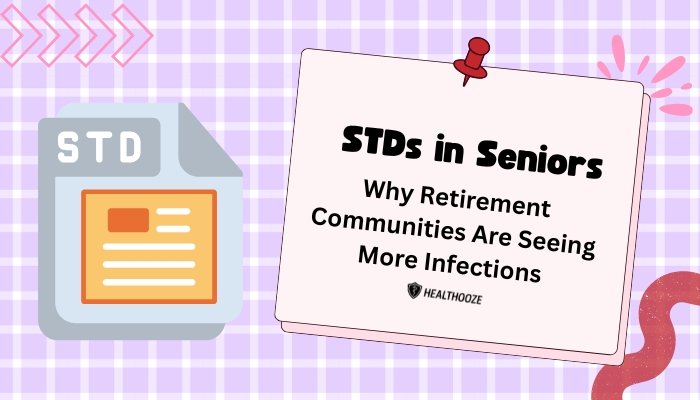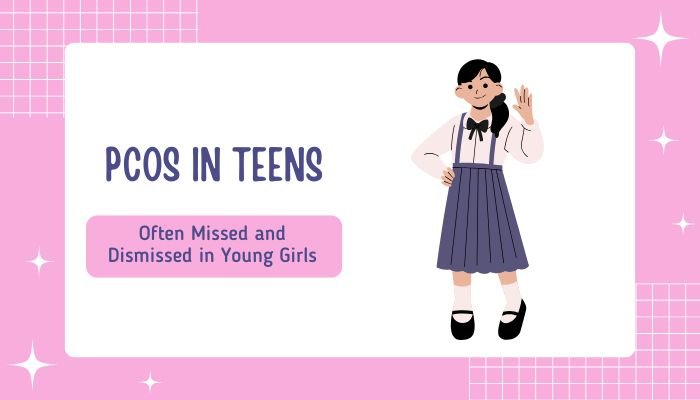Introduction
Attention-deficit/hyperactivity disorder (ADHD) has long been depicted in a narrow way, most notably in boys who exhibit hyperactive behavior in classroom settings. This prevailing image overshadowed the reality that ADHD affects individuals of all ages and genders, each with unique presentations.
Adult women with ADHD often contend with a distinct set of challenges, partly due to societal expectations and diagnostic biases. Unfortunately, these issues can lead to a large number of women going undiagnosed or misdiagnosed.
Many adult women living with ADHD have spent years struggling to meet day-to-day demands. They might cope with forgetfulness, mental fatigue, and a constant feeling that life is more chaotic than it should be.
Yet, these difficulties remain hidden behind a façade of competence, masking the extent of their distress. By exploring the complexities of ADHD in women, we can highlight the varied presentations, illuminate reasons they frequently slip through the diagnostic cracks, and propose solutions for better recognition and support.
Understanding ADHD: A Brief Overview
ADHD is a neurodevelopmental condition marked by symptoms of inattention, hyperactivity, and impulsivity. Historically, diagnostic criteria focused on overt, hyperactive manifestations typically seen in children—especially boys. However, research shows a wide spectrum of presentations, with some individuals displaying more inattentive behaviors, others more hyperactive traits, and many with a combined type.
Core Symptoms and Variations
- Inattentive Symptoms
- Difficulty sustaining attention on tasks and conversations
- Frequent forgetfulness, losing items or missing deadlines
- Procrastination, disorganization, trouble prioritizing
- Hyperactive/Impulsive Symptoms
- Restlessness, fidgeting, or difficulty staying seated
- Racing thoughts, talking excessively, acting before thinking
- Inability to wait or interrupting others frequently
- Combined Type
- Exhibits characteristics from both inattentive and hyperactive/impulsive categories
While ADHD begins in childhood, many adults remain unaware they have it. The high prevalence of inattentive presentation in women can lead to a misperception that they are simply “spacey” or “disorganized,” rather than clinically experiencing ADHD.
Why Women Remain Undiagnosed
Diagnostic Bias and Gender Stereotypes
Past research and clinical guidelines centered heavily on male-based samples, reinforcing the image of ADHD as a hyperactive boy disrupting the classroom. Girls and women with significant inattentive features were rarely studied. Society often expects females to be polite, cooperative, and self-contained, causing them to mask or internalize their symptoms. These social pressures help camouflage behaviors that might be easily flagged as ADHD in boys.
Inattentive Presentation Is Overlooked
Women are more likely to display inattentive ADHD than overt hyperactivity. Instead of running around a classroom, an inattentive girl might daydream quietly or perform below her potential. As adults, many women juggle responsibilities and appear to function—albeit at a great personal cost. Their struggles are written off as “laziness” or “lack of motivation” rather than an executive function disorder.
Coping Through Perfectionism
Some women cope with ADHD by becoming perfectionists. They may invest excessive time organizing details, rewriting lists, or triple-checking their work. On the surface, they appear meticulous. Internally, however, they battle anxiety, burnout, and fear of forgetting something crucial. This perfectionistic shell hides the underlying struggles with attention and can delay an accurate diagnosis.
Coexisting Conditions Mask ADHD
Adults with undiagnosed ADHD often develop comorbid conditions, such as anxiety, depression, or eating disorders. When these coexisting issues come to a clinician’s attention, they sometimes receive the primary focus, overshadowing the underlying ADHD. Women presenting with depression or anxiety—common in the general population—might not be further evaluated for ADHD, especially if they display fewer overt hyperactive symptoms.
Life Transitions
Major life milestones (college, marriage, parenthood, career changes) can exacerbate ADHD traits. A woman who managed her symptoms with structure in childhood may find her coping strategies crumble under new responsibilities. Yet even then, the link to ADHD might be missed, with family or friends attributing struggles to “stress,” “hormones,” or inadequate time management skills. Without awareness, neither professionals nor women themselves consider ADHD as a root cause.
Signs of ADHD in Adult Women
Subtle Challenges in Day-to-Day Life
Adult women with ADHD might experience:
- Time Blindness: Chronic lateness or difficulty gauging how long a task will take.
- Chronic Disorganization: Overstuffed purses, messy desks, scattered sticky notes.
- Messy Homes or Workspaces: Cupboards packed chaotically, an avalanche of emails in the inbox.
- Memory Gaps: Consistent misplacement of phone or keys, missing important deadlines.
- Difficulties with Routine Tasks: Frustration in daily chores (e.g., laundry, meal planning) that seem effortless for others.
Emotional and Psychological Indicators
In addition to these outward behaviors, many adult women grapple with hidden emotional struggles:
- Imposter Syndrome: Feeling they cannot meet adult responsibilities, even if successful on paper.
- Low Self-Esteem: Persistent belief they are lazy, irresponsible, or incompetent.
- Mood Swings: Rapid emotional shifts, sometimes mistaken for mood disorders.
- Anxiety Over Forgetting Important Items: Over-preparing (carrying huge purses, setting multiple alarms) to compensate.
Sensory Sensitivities
Some women with ADHD have heightened sensitivities to sounds, fabrics, or lights. Though sensory challenges are often tied to autism, there is significant overlap in ADHD populations too. They may find typical workplace chatter disorienting or struggle with certain fabrics that feel too tight. These sensitivities further drain focus as the brain is over-busy filtering out discomfort.
Impact on Relationships
Many women are the emotional “glue” holding relationships or families together, which can intensify the pressure. ADHD can affect communication and task management within a household:
- Forgetting Birthdays or Anniversaries: Leading to guilt or conflicts with loved ones
- Impulsive Spending: Causing friction in shared finances
- Emotional Overwhelm: Leading to outbursts or withdrawing from family events
While some partners are supportive, others see these lapses as inconsiderate, fueling tension or misunderstandings.
Social Expectations and Their Consequences
Societal Role of Caregiver
Women often take on caregiving duties—for children, spouses, or aging parents—that demand meticulous planning and consistent follow-through. ADHD-related forgetfulness or disorganization can trigger shame if they struggle to keep track of appointments, pack lunches, or coordinate schedules. In a culture that still associates the primary caregiver role with female identity, women can feel intensified guilt or failure.
Pressure to “Have It All Together”
Magazines and social media bombard women with images of multitasking supermoms and successful professionals. Women with ADHD might then believe their struggles signal personal inadequacy. They overcompensate by staying up late to complete tasks or using elaborate organizational tools. This cycle can lead to emotional burnout and deteriorating self-esteem.
Emotional Labor
On top of logistical tasks, women often handle emotional labor—soothing feelings, maintaining social calendars, and offering support. ADHD complicates the invisible work of remembering birthdays, sending thank-you notes, or checking in on loved ones regularly. Forgetting these perceived “little things” can spark misunderstandings, even though the individual genuinely cares.
Cultural Views on Hyperactivity in Women
Men with restless energy are sometimes praised for being driven or passionate. Women who display hyperactive behavior, however, risk social judgment. This discrepancy can result in more masking behavior among women. They restrain fidgetiness or channel it into acceptable “busyness,” further obscuring clinical signs of ADHD.
The Role of Hormones Across a Woman’s Lifespan
Fluctuations and Worsening Symptoms
Reproductive hormones can affect ADHD traits significantly. Fluctuations in estrogen and progesterone levels influence neurotransmitter activity in the brain. As a result, a woman might notice changes in focus and mood during:
- Puberty: The initial surge of hormones can amplify ADHD traits.
- Menstrual Cycles: Some experience marked increases in distractibility or emotional dysregulation in the premenstrual phase.
- Pregnancy and Postpartum: Hormonal shifts and lack of sleep may intensify ADHD challenges.
- Perimenopause/Menopause: Declining estrogen often correlates with a spike in cognitive difficulties, including working memory lapses and mood swings.
Impact on Diagnosis
Because these hormonal phases can overlap with other life changes, ADHD remains hidden. A doctor may attribute postpartum forgetfulness or menopausal brain fog to life transitions instead of investigating ADHD. Additionally, depression or anxiety sparked by hormonal changes can further mask the underlying condition.
Coexisting Conditions
Anxiety and Depression
Daily struggles with organization, impulsivity, or social interactions can wear on mental well-being, leading many women to develop anxiety or depression. The persistent fear of forgetting tasks or making mistakes can fuel chronic stress. This heightened stress predisposes them to depressive episodes. Clinicians often treat these conditions without identifying ADHD as the root contributor.
Eating Disorders
Certain studies suggest higher rates of disordered eating in women with ADHD. Binge eating or bulimia, for example, may be tied to impulsivity and emotional dysregulation. Additionally, the dopamine-seeking brain might gravitate toward food as a self-soothing mechanism. Without appropriate ADHD management, efforts to address eating disorders may only tackle surface behavior, not the underlying neurochemical drivers.
Substance Use
Unrecognized ADHD can push some women to self-medicate. They might rely on caffeine, alcohol, or illicit drugs to manage their internal restlessness or quell emotional distress. Conversely, the risk of addiction to prescription medications (like stimulants) can raise concerns, though when properly managed and monitored, stimulant therapy helps reduce the risk of misusing other substances.
Fibromyalgia and Chronic Pain
Some researchers observe an overlap between ADHD and chronic pain conditions in adult women. Though causality is not fully established, the link between stress, insomnia, and emotional dysregulation in ADHD could contribute to or worsen chronic conditions like fibromyalgia. Identifying ADHD might allow more comprehensive pain management strategies.
Path to Diagnosis
Self-Assessment and Research
Adult women suspecting ADHD often begin by learning about symptoms through articles, social media, or anecdotal conversations. They may:
- Identify with stories of women who discovered ADHD late in life
- Notice repeated patterns of forgetfulness or impulsive decisions
- Realize that childhood experiences align with inattentive or hyperactive traits
Self-assessment questionnaires provide some guidance, though a thorough evaluation by a mental health professional is still necessary for formal diagnosis.
Professional Evaluation
Diagnosis usually involves a psychologist, psychiatrist, or neuropsychologist specializing in ADHD. Key steps include:
- Clinical Interview: Detailed personal, educational, and occupational history
- Symptom Checklists: Rating scales such as the Adult ADHD Self-Report Scale (ASRS)
- Collateral Information: Family members or close friends who can describe longstanding patterns
- Screening for Comorbid Conditions: Exploring anxiety, mood disorders, or other health issues that may mimic or mask ADHD
Gender-Informed Assessment
Because many tools were validated in mostly male samples, an evaluator aware of gender differences can interpret subtle traits more accurately. This professional might query about unique female experiences (e.g., how ADHD interacts with hormone cycles or caregiving roles). They also consider that some women’s hyperactivity is emotional or mental, not always physical.
Benefits of a Late Diagnosis
Self-Awareness and Validation
Finally receiving an explanation for years or decades of struggle can be profoundly validating. It reframes perceived flaws—scattered thinking, forgetfulness, emotional reactivity—as byproducts of a neurodevelopmental condition. Women often experience a sense of relief, better self-acceptance, and a path forward.
Targeted Treatments and Strategies
A diagnosis opens the door to interventions that can alleviate day-to-day difficulties. Options may include:
- Medication: Stimulants (e.g., methylphenidate, amphetamines) or nonstimulants (e.g., atomoxetine)
- Therapy: Cognitive-behavioral therapy (CBT), coaching, psychoeducation groups
- Lifestyle Adjustments: Exercise routines, mindfulness practices, better sleep hygiene
- Hormonal Considerations: Adjusting treatments around cycle phases or menopause
Improved Relationships
Recognizing ADHD can transform interpersonal dynamics. Partners, family, or friends gain insight into triggers and reactivity. They may shift from viewing behaviors as laziness or carelessness to understanding them as part of a legitimate condition. Jointly developing coping mechanisms fosters healthier communication, reduces conflict, and boosts empathy.
Career and Educational Support
For those struggling in the workplace or considering returning to school, formal accommodations become possible. Time extensions on tasks, flexible schedules, or quiet environments for focus can facilitate productivity. Women who once hid their daily battles may find renewed confidence to pursue career advancements or further education with the right support systems.
Treatment Approaches for Adult Women
Medication
Medication can be a cornerstone of ADHD treatment. Stimulants increase the availability of dopamine and norepinephrine in the brain, enhancing focus and impulse control. Nonstimulant options exist for those who do not respond well to or cannot take stimulants. Women should work closely with a doctor who understands potential interactions with contraceptives, hormonal cycles, or comorbid conditions.
Therapy and Coaching
- Cognitive-Behavioral Therapy (CBT): Helps reframe negative self-talk, develop organizational skills, and manage stress.
- ADHD Coaching: Focuses on practical techniques for scheduling, prioritizing, and breaking down large tasks. Coaches serve as accountability partners, helping clients stay on track.
- Support Groups: Virtual or in-person, these groups connect women who share experiences. Discussing solutions or simply venting frustrations builds a sense of community and validation.
Lifestyle Modifications
- Physical Exercise
- Boosts dopamine and serotonin, improving mood and attention.
- Regular workouts help manage restlessness, providing an outlet for extra energy.
- Mindfulness and Meditation
- Enhances self-awareness of emotional fluctuations, reducing impulsive reactivity.
- Even brief, consistent mindfulness practice can lower stress and re-center attention.
- Organizational Tools
- Digital apps, planners, and reminders help break tasks into chunks and track deadlines.
- Color-coded calendars or bullet journals can transform chaotic schedules into structured plans.
- Routine and Structure
- Setting consistent meal times, bedtimes, and daily rituals lowers the cognitive load.
- Minimizing clutter in one’s environment can ease distractions, particularly if sensory issues persist.
Addressing Hormonal Factors
Some women track their menstrual cycles and adjust strategies accordingly. They might schedule important deadlines or social events in parts of the cycle when attention is most stable. If hormonal shifts severely affect concentration, talking with a gynecologist or endocrinologist may help. Contraceptives, hormone replacement therapy (HRT), or lifestyle adjustments can soften cyclical disruptions.
Navigating Daily Life with ADHD
Household Management
- Declutter Regularly: Evaluate belongings to ensure easy access to necessary items.
- Use a “Command Center”: A central location for calendars, to-do lists, and bills.
- Divide and Conquer Tasks: Break large chores (like spring cleaning) into smaller tasks spread out across days.
Working with Strengths
Women with ADHD can excel in roles that harness their creativity, problem-solving, and high energy. For instance:
- Entrepreneurship: Flexible schedules and self-driven goals can match ADHD attributes.
- Creative Fields: Writing, design, or art can thrive under bursts of inspiration.
- Fast-Paced Environments: Places where multi-tasking is needed may suit ADHD minds (though healthy boundaries are still crucial).
Family and Relationship Support
- Communication
- Have open conversations about ADHD-related challenges, clarifying specific needs (e.g., “I get overwhelmed when rushed; please give me a 10-minute heads-up before leaving”).
- Shared Calendars
- Digital tools can keep everyone aligned on appointments, so fewer obligations slip through the cracks.
- Delegate Tasks
- If finances allow, consider outside help (e.g., cleaning services). Alternatively, assign family members chores that match their strengths, reducing the load on an ADHD mother who feels pressure to handle everything.
Self-Compassion and Boundaries
A crucial aspect of managing ADHD is maintaining emotional well-being:
- Celebrate Small Wins: Notice and reward yourself for improvements, like finishing a project on time or decluttering a closet.
- Avoid Overcommitment: Overbooking leads to burnout. Learn to say “no” or “not now.”
- Establish Personal Downtime: Whether it is reading, a hot bath, or a creative hobby, breaks help restore mental energy.
Advocating for Awareness and Inclusivity
Educational Outreach
Public misconceptions persist about ADHD, especially in adult women. Schools, workplaces, and community centers can host talks or distribute materials clarifying that ADHD spans genders, presentations, and ages. Representation in media—films, books, articles—also shapes understanding. Portrayals of adult women with ADHD, featuring diverse backgrounds and experiences, increase normalization.
Healthcare System Improvements
Professionals need to adopt screening protocols for adult ADHD that account for gender differences. Ongoing medical education should cover nuanced presentations in women. Developing validated female-specific symptom checklists or updating existing tools can lower the likelihood of overlooked diagnoses. Inclusion of ADHD modules in mental health curricula ensures emerging clinicians recognize the varied manifestations.
Policy and Workplace Accommodations
Governments and businesses that accommodate neurodiverse employees stand to gain productivity and innovation. Policies that promote flexible work arrangements, quiet office zones, or extended deadlines help not only women with ADHD but the entire workforce. By adjusting internal systems, organizations acknowledge the reality of neurodiverse experiences and cultivate inclusive cultures.
Common Myths and Realities of ADHD in Women
| Myth | Reality |
| “ADHD is a childhood issue only.” | ADHD persists across the lifespan, including in adult women. |
| “Women cannot have hyperactivity.” | Many women do have hyperactivity, but it may manifest more subtly or be internalized. |
| “Late diagnosis is pointless.” | Understanding ADHD, even in later life, improves self-awareness, relationships, and coping. |
| “They just need better time management.” | ADHD involves underlying neurobiological factors, not laziness or weak willpower. |
| “All ADHD looks the same.” | Each person has a unique combination of inattentive, hyperactive, and impulsive symptoms. |
| “Stimulants are addictive and harmful.” | Properly prescribed medication can be safe and significantly improve quality of life. |
Conclusion
Adult women with ADHD have long gone undiagnosed, navigating a world that was quick to attribute their difficulties to character flaws or stress. Their journeys often involve masking behaviors, high emotional labor, and a profound sense of self-doubt. When finally recognized, ADHD provides a clarifying lens that explains the scatter of their lives and offers tangible paths toward relief.
By acknowledging the full range of ADHD presentations and the societal pressures faced by women, we move closer to inclusive medical care and community support. For women newly discovering their ADHD, resources such as therapy, coaching, and medication options can instill renewed hope. As awareness grows, so does the impetus to reshape educational, professional, and health care frameworks—allowing adult women to thrive with ADHD, rather than struggle invisibly against it.
Table: Key Challenges and Coping Strategies for Women with ADHD
| Challenge | Strategy |
| Chronic disorganization | – Use color-coded systems, digital reminders, dedicated storage solutions |
| Overwhelm with caregiving tasks | – Delegate household chores; practice “good-enough” standards |
| Emotional dysregulation | – Implement mindfulness, CBT, or counseling to handle mood fluctuations |
| Hiding or “masking” ADHD symptoms | – Establish safe outlets (support groups, therapy) to process feelings |
| Hormonal fluctuations intensifying ADHD | – Track cycle, adjust medication or routines as needed; consult with endocrinologist/gynecologist |
| Tendency toward perfectionism | – Recognize diminishing returns; set realistic time limits for tasks |
| Coexisting anxiety or depression | – Integrated treatment plan addressing both ADHD and mental health issues |
| Relationship strain | – Communicate about ADHD’s effects, seek couples or family counseling if beneficial |
| Overcommitting to tasks and events | – Learn to say “no”; block downtime on calendar |
| Shame or imposter syndrome | – Reframe self-talk, focus on incremental progress, celebrate small wins |
References
- Quinn PO, Madhoo M. A review of attention-deficit/hyperactivity disorder in women and girls: Uncovering this hidden diagnosis. Prim Care Companion CNS Disord. 2014;16(3):PCC.13r01596.
- Faraone SV, Rostain AL, Blader J, et al. Practitioners’ guide to adult ADHD: diagnosis and management. Psychopharmacol Bull. 2019;49(3):15–22.
- Kooij JJS, Bijlenga D, Salerno L, et al. Updated European Consensus Statement on diagnosis and treatment of adult ADHD. Eur Psychiatry. 2019;56:14–34.
- Caye A, Swanson JM, Thapar A, et al. Life span studies of ADHD—conceptual challenges and predictors of persistence and outcome. Curr Psychiatry Rep. 2016;18(12):111.
- Young S, Bramham J. ADHD in Adults: A Practical Guide to Assessment and Management. 2nd ed. Routledge; 2020.
- Williamson D, Johnston C. Gender differences in adults with attention-deficit/hyperactivity disorder: A narrative review. Clin Psychol Rev. 2015;40:15–27.
- Biederman J, Faraone SV, Monuteaux MC, Bober M, Cadogen E. Gender effects on attention-deficit/hyperactivity disorder in adults, revisited. Biol Psychiatry. 2004;55(7):692–700.
- Sell MA, Fimbres AM, Martin CA. ADHD in adult women: the role of gender, sex hormones, and comorbidities. Curr Psychiatry Rep. 2020;22(11):58.
- Gershon J. A meta-analytic review of gender differences in ADHD. J Atten Disord. 2002;5(3):143–154.
- Simoes M, Levin R, Choi L. Sensory differences in ADHD: A focus on adult women. Psychol Health. 2021;36(4):377–393.
- Levine BH, Anzivino JC. ADHD in the media: A portrayal of gender and adulthood. Trends Psychiatry Psychother. 2019;41(3):244–251.
- Safren SA, Sprich S, Mimiaga MJ, Surman C, Knouse L, Groves M. Cognitive behavioral therapy vs relaxation with educational support for medication-treated adults with ADHD and persistent symptoms. JAMA. 2010;304(8):875–880.







